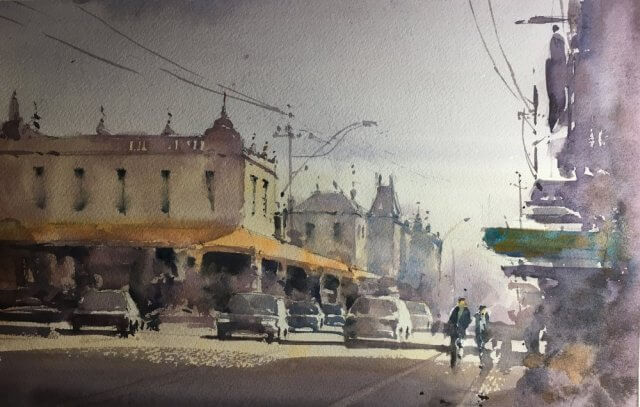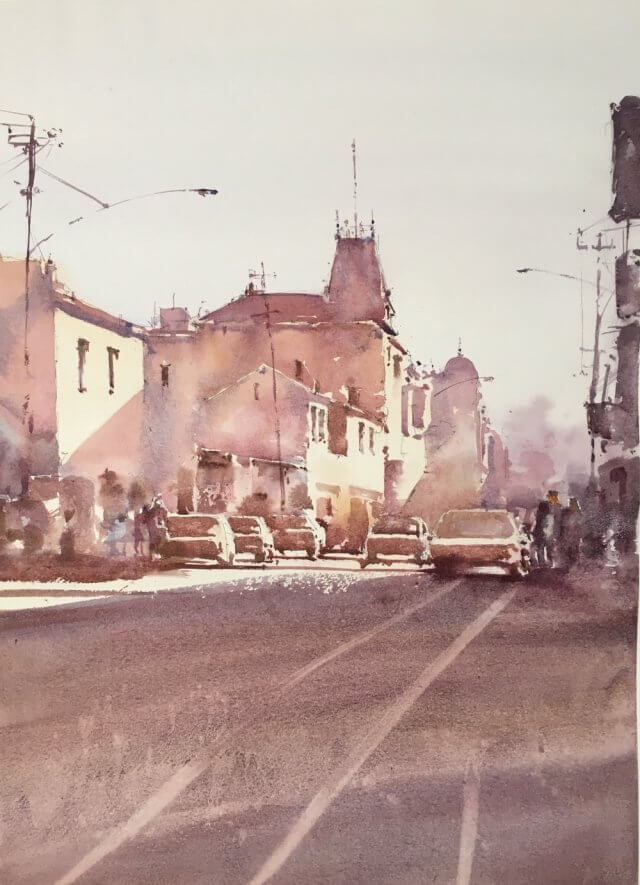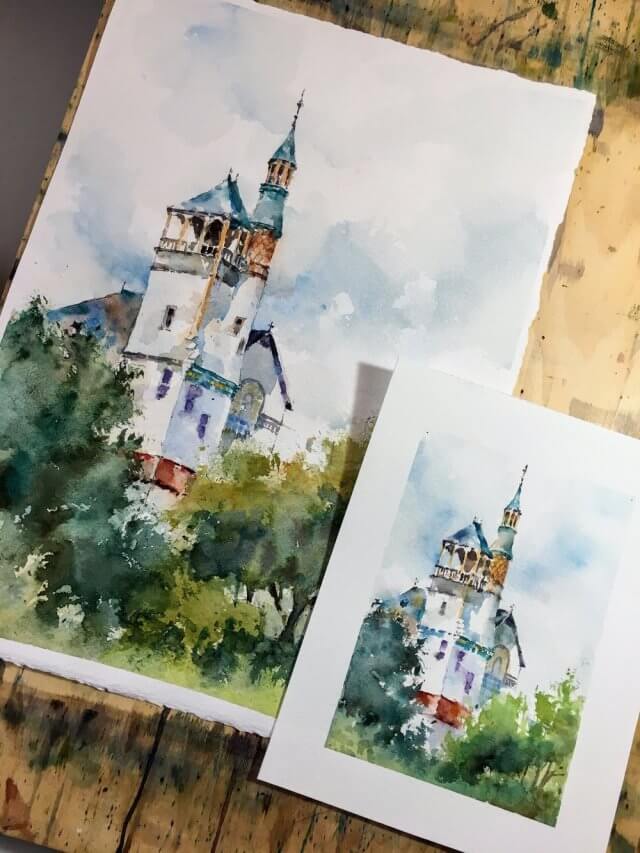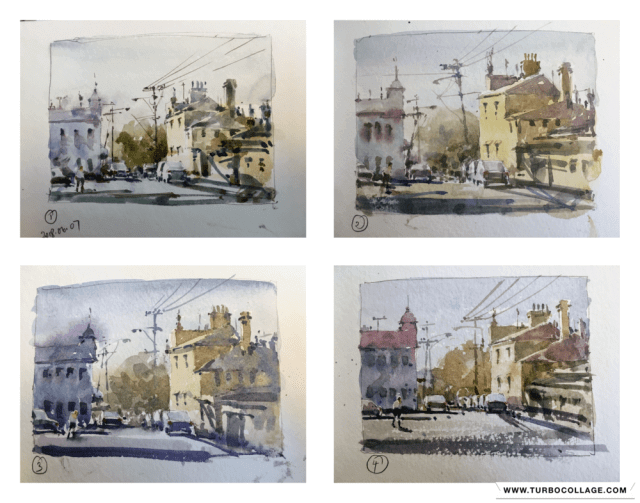Stepping it up a bit today and completed 4 paintings. All are from Zbukvic originals. I was hoping that a fast turnaround would speed up the learning process and consolidate some things into muscle memory.
Before the pictures a summary. None of these came out as paintings. They’re obviously sketches or studies but I started to soak in a few things.
Shapes. A few big shapes, more smaller shapes. Make sure the negative space is also an interesting shape.
- Values. Keep the values even in the big shapes (with a little variation for interest) and you only really need 4 or 5 to make the picture work.
- Color – ugh. Still need to work on this.
- Texture. This was hard. Mr Zbukvic has lots of lovely slight variation in his washes which I really struggle to get.
- Drawing – Surprisingly simple to draw out these paintings. Lots of simplification has already been done by Mr Z.
Anything else? I think I improved as the day went on and was making the paintings more mine than copying the original. No great breakthroughs but definitely worthwhile.
So to the paintings – in reverse order :
This was the last and I think the most successful. I’d got used to the sequence of washes – lightest in sky and the sunlit parts of the buildings. Second the background and shadows on the buildings. 3rd – cars and dark recesses. 4th and final – people and the foreground and other bits and pieces.
I’d also started to get used to some of the wet in wet for windows and background mistiness.
Next one – number 3 :
Struggled with this one. The original has lots of variation in the darks which I just wasn’t getting. The strong composition makes this one – especially the foreground shadow – which is of course all Mr Z’s doing.
Next one – number 2
This had quite a lot I liked. The color came out well. The combination of dull orange and the purple shadows worked without being too in your face. The center of interest has nice lots of choppy darks and lights which read well without specifically being anything. So not great but not too bad.
Finally – number 1
Again this didn’t come out too badly. I was feeling my way at this point and you can see the background washes are a bit muddy. Nice choppiness in the center of interest and the combination of darks and lights worked well.
So it was a busy day. As usual I’m too close to things to really assess whether it was worthwhile. It’s certainly a different beast copying paintings rather than scenes. The simplification and composition has already been done for you which are two things you don’t have to worry about. Once the drawing is done it’s a case of identifying which value wash goes where and trying not to get too fiddly. I think after another day of these (I have nine in total to have a go at) I’ll concentrate on extreme simplification of some of my own scenes.















